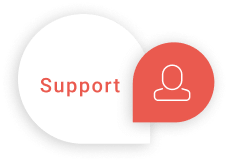On-Premises, Cloud, or Hybrid; Which Solution is right for your enterprise?

It’s been a vitally important topic in IT for many years now; the cloud. What types of cloud-based services are best suited for your business? To what degree should you consume them? How can you navigate the numerous available options? Is the cloud safer, cheaper, and/or faster than your current network infrastructure? And honestly, just what is the cloud? Most people have a rough idea but ask five people and you’ll probably get five different answers. You read about SaaS, PaaS, IaaS, BUaaS, and the list just keeps going. It seems you could put any letter in front of the “aaS” acronym and makeup something unique relating to cloud solutions. The truth is, there is no single right answer to which cloud services best fit your needs, but there are several factors that will help make your decision far clearer.
Let’s start with a few definitions that will hopefully clear a few things up; aaS is simply “as a service”. This acronym signifies that most cloud solutions are meant to be consumable. In some form or fashion at its base level, any aaS utility is some combination of another organization’s infrastructure and team that you are utilizing. You often do not know where the resource resides—and you may not care—but the assumption is that it is always up, fast, and safe. This idea is a direct comparison to your on-premises gear, often referred to as “on-prem”. Simply put, on-prem equipment is the collection of infrastructure components that remain at your business location(s).
Some of the more common “aaS” acronyms are:
- IaaS: Infrastructure as a Service. This is typically computing, storage, network, and security components ready for you to consume. In most cases, IaaS is like a subscription for a virtual data center. You may choose to support the operating system on up through applications, data sets, etc., on your own, but typically the IaaS model assumes that the infrastructure is provided and maintained for you.
- SaaS: Software as a Service. These are all the back-end applications that you access from anywhere, but that you don’t really own, like Salesforce, NetSuite, SAP, Oracle ERP, and hundreds of others.
- PaaS: Platform as a Service. Similar to IaaS, except that PaaS typically brings with it additional options including databases, middleware components, and Operating Systems (OS)
- BUaaS: Backup as a Service, or often Backup and Recovery as a Service. BUaaS affords you some combination of backup for your on-premises and hosted servers.
Where are we now at the end of 2018?
When first debuted, there was a large rush to consume cloud-based services and solutions. The prevailing thoughts were that cloud solutions were sure to be faster, cheaper, and less complex; that a large burden would be lifted off internal IT staff and, of course, security could be assumed. Not so fast, because unfortunately this ideal isn’t always the case. In some instances, cloud solutions can add complexity and are not always faster. The industry is now actually starting to see the pendulum swing the other way; some companies are migrating applications and related data sets back from the cloud to their on-premises equipment for several reasons. While the initial migration often relieved much of the support burden off the internal team, it oftentimes resulted in poor performance for specific application types. Some applications that store large data files and types, especially graphics files and those tied to latency-sensitive applications like ERP, often result in interactive response times that are slower, sometimes unacceptably so. Also—depending on the provider—the criteria of being “cheaper” was not always met when you added in a full compliment of proactive and reactive support services. To further complicate matters, some public entities that take credit cards for orders, store consumer information, or are tied to the healthcare industry typically require adherence to very specific compliance regulations that not all cloud providers can comply with. As a result, it has become increasingly more important to start planning for cloud service implementation by first understanding your business requirements. Ensure that the needs of your business are driving the decisions on infrastructure design, and not that infrastructure options are driving the way your business needs to operate. It is critical to align with capable service providers who can help you determine the proper mix of capability, performance, and price.
So, where do you house your applications and data?
Size Matters: Collaborative files like documents, presentations, spreadsheets, and other similar file types are excellent candidates for placing in the cloud. That way, they are easily accessible by your team and you can minutely control who has what level of access. Clever online collaboration tools allow for versioning of files and ensure that you can work as a team without overwriting one another’s progress.
Larger files—like graphics files, videos, and large databases typically require a little more investigation, including understanding the needs of the end-users who are accessing them, before a decision can be made. ERP applications typically operate by performing scores of database lookups on a continual basis, making the interactive portion of the experience untenable if the application is housed a significant distance away from the end user. However, if end users are spread across the country or globe, then cloud accessibility options must remain open. Accessing large files housed on even the most efficient servers can prove troublesome if your end users are having to wait on them to load across a WAN or internet connection of great distance.
Security is Always a Consideration: Not all cloud or hosting providers are created equal. If you require adherence to compliance regulations like PCI, HIPAA, etc., always talk with your prospective provider(s) to ensure they can support your unique compliance needs.
High Availability (HA) & Disaster Recovery (DR); Different, but Equally Important: Price always plays a role in where you house your applications and data. Often you can consume inexpensive IaaS that is backed up, knowing that if anything happens to the provider’s hardware that they can get your data back after some time and effort. High Availability comes into play when your provider eliminates single points of failure to provide you with greater uptime. This is typically accomplished by implementing some combination of advanced storage array networks (SANs), with your applications and data being delivered digitally on virtual servers that can be run on more than one physical server. Add in multiple network switches, cabling, firewalls, etc., and the provider can typically eliminate single points of failure, providing you with a highly available experience that can greatly diminish downtime. Disaster recovery is different from HA; true DR includes technology infrastructure and support services allow for almost all eventualities that can be reasonably controlled. This typically means that you could lose an entire data center and still keep your clients functioning because the data is being replicated to another physical location. Some providers blur the lines between HA and DR by saying that replicating to other physical infrastructure in the same location is technically DR; while that does meet a lot of the criteria, it does not account for tragedies such as natural disasters or acts of terrorism. It is always a good idea to understand what options your provider has in relation to HA and DR to achieve the maximum uptime for your dollar.
Is the cloud cheaper?
This is a very difficult answer, as it depends upon so many factors and takes into consideration staff support, licensing, OPEX, CAPEX, etc. It is also determined by the state of your data center along with the skill of your team. If you have a poorly equipped data center, it is typically advantageous to find ways to consume cloud infrastructure and services. It is usually cheaper and safer than having to build up all the hardware, software, monitoring tools, and support teams yourself. If you have invested seriously in a data center and the associated infrastructure, then it is not always a straightforward choice. In some cases, a hybrid approach may make sense. Remember that if your physical data center is strong and you have good equipment, but your team is light, you can always contract with support providers like Encore Technology Group to maintain your infrastructure for you. Conversely, if you have a strong team, but a poorly equipped data center, you might consider a local hosting provider. Hosting providers are similar to cloud providers, but have an advantage in that they can often provide you with physical equipment that is dedicated to you (to varying degrees), that you can maintain with them. There are many options available for most budgets.
How do you make the right decision?
Work with a partner who has your best interests in mind, not one that just wants to sell you services. That partner should start by assessing your business needs first, then investigate your team and infrastructure. That information-gathering effort should then be used to map out a thorough strategy of location of all applications and data types along with how to support those needs with some combination of internal and contracted support. All of these options and decisions should be based upon business need and budget, and your partner should be reputable enough to be well versed in the options to help you make the right decisions!

